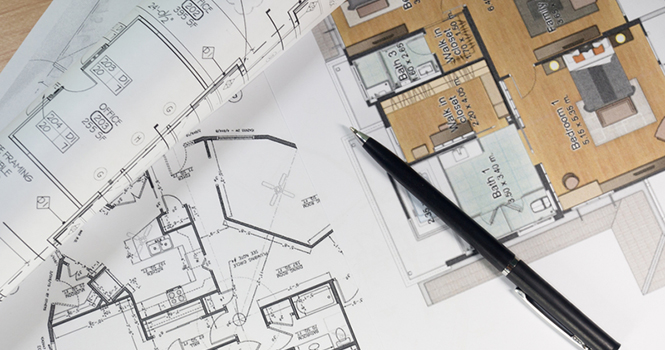It’s worth emphasizing now more than ever: Diversity is what the United States of America is all about. The country, of course, was cobbled together on this very idea—diversity of geography, beliefs, people. And even the homes they live in! We’ve got architectural styles rooted in the history of our nation before it was a nation (Colonial, Pueblo), a variety of imports (Spanish, French, Mediterranean) and lots of utterly contemporary styles.
So what is an American home, really? It might be easier to come up with a definitive answer to the question: What’s the ultimate American TV show or ’80s rock band? (For the record, “Breaking Bad,” and the Replacements, respectively). But just as with pop culture or food, there are some tastes that unite us and others that are regional preferences.
We thought it was the ideal time to dive deep into our own data to find the architectural home styles that best define our nation. We looked into realtor.com®’s listing descriptions to find out which types of homes are mentioned the most, where they are most popular, and whether their prices are going up or down as they fade in and out of vogue.
Here’s what we found: some seemingly ironclad regional preferences. Some changes. A few surprises. And one clear winner for the title of the American home.
Most regional architectural styles in the United States have their roots both in history and in the environment: They grew out of the types of building materials, such as stone, wood, or clay (for bricks), that were readily available during the early period of development, and the climates that these homes were constructed to withstand, says architect Mark Hogan of OpenScope Studio in San Francisco. They were also often reminiscent of popular styles in the regions where the builders and buyers hailed from—including European influences for Spanish, French, and Tuscan-style homes.
For those reasons, “when people were first settling the West Coast … it ended up looking very different than what was being built on the East Coast at the same time,” Hogan says. “They were very limited to what they could find nearby.”
And yet there is one style that has managed to conquer most of the nation. Drumroll, please. The most popular home style in 29 of the 50 states is….
The ranch home.
To housing experts, this is no surprise. Ranch houses can be built quickly and inexpensively and can be customized easily to suit the whims of buyers. Although the low-slung style is inspired by the Old West, it spread across the country with the rise of automobile culture in the 1960s. Able to accommodate one or two cars, the sprawling homes quickly populated the new suburbs.
“The ranch style signals a lifestyle change of that age. Front porches went away, and people are more into backyard living and protecting privacy,” says Tim Cannan, president of PreservationDirectory.com.
The second most popular architectural style is the “traditional,” a somewhat vague classification encompassing a variety of classic designs, defined by simple rooflines and symmetrical windows, along with the inclusion of formal living and dining rooms, a welcoming front porch, and often cozy fireplaces. Its popularity will come as no surprise to anyone who has visited the South, where it reigns supreme.
The maps above reflect a bit of American history as well. Colonial homes, unsurprisingly, remain popular in the Northeast, where British colonists originally settled. The rectangular or box-shaped homes typically have a decorative crown above the front door.
“They were easy to construct,” says Stephen Glasheen, architectural project manager at Polhemus Savery DaSilva, in East Harwich, Mass. “That’s why they’re so common on the East Coast. It’s where they started, and it has through the generations.”
Meanwhile, Victorians, most popular on the East Coast and into the Midwest, have a wealth of detail, with intricate moldings and ornate shapes carved into beams above, says Glasheen. The style originated when Queen Victoria ruled the British Empire, from the mid- to late 19th century.
“It has an iconic feel to it,” Glasheen says of the homes, best known for their signature pitched roofs, textured shingles, and long front porches. “It’s recognizable no matter where you are.”
Cape Cod homes, named for the strip of land defining Massachusetts Bay, where they first became popular, are plentiful as far west as the Mississippi River, but their presence remains strongest on their home turf of New England. And the prevalence of rustic cabins maps pretty well onto the locations of the Appalachian, Rocky, and Sierra Nevada mountain ranges.
At the state level—once you have filtered out all those ranch houses—some fascinating preferences emerged. Who knew that Illinois was so crazy about Georgian homes? Listings there cite the style more often than in any other state. (Come to think of it, one was featured in “Home Alone,” which took place in the Chicago suburbs.) Meanwhile, the Spanish style—another colonial legacy—rules in California, from average homes to its best-known state prison.
The architectural styles that’ll really cost you
In recent years, the Mediterranean or Tuscan style home has become the favorite among luxury builders. The median size of Mediterranean homes is 3,325 square feet—after all, it has to be big enough for breezes to flow freely through those open arches and verandas. Plus, you can’t have a Mediterranean home without an extravagant garden! Duh.
But in the past four years, the median price of a Mediterranean home stalled at $749,900. Could this love affair be growing stale? Meanwhile, the average home appreciated by 9 percent, and modern homes made the biggest gain since 2012, 37 percent.
“Modern homes are built to be more energy-efficient, and modern-looking,” says Cannan. “It’s easier to heat and cool them, and they’re cheaper to repair as opposed to Mediterranean or Spanish style—those red clay roofs could wind up costing much more. So it’s really the size and scope that determines what people can afford.”
The same case applies to Craftsman homes. You don’t just wander into the Home Depot and expect to find handmade doorknobs or hinges to go with your elaborately crafted home.
And at the other end of the price spectrum, affordable bungalows are looking good, as the lack of inventory drives up home prices nationwide. The median price of $134,000 represents a 28 percent increase since 2012.
“Bungalows typically have very large roof overhangs … which provides a whimsical aesthetic,” architect Glasheen says. They resonated with buyers because they were one of the first styles that allowed owners “to have their own unique style of home.”
Starter home, anyone?
This article was originally published on Realtor.com.













